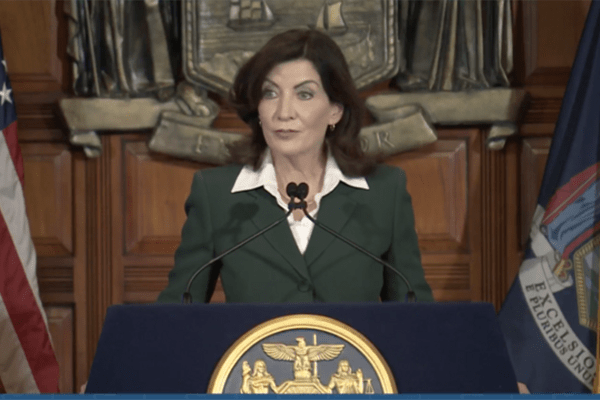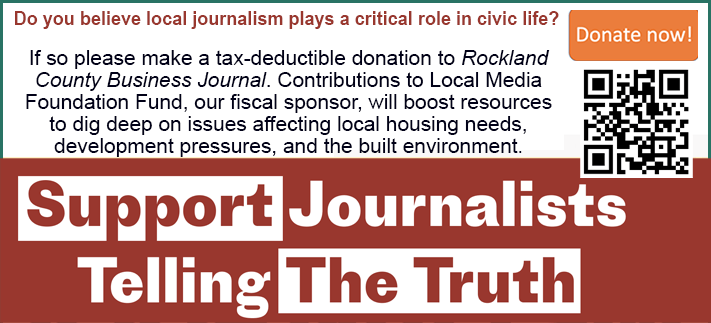|
RCBJ-Audible (Listen For Free)
|
Controversial Faith-Based Affordable Housing Act Absent From Legislation
New York State News
New York lawmakers passed a $237 billion state budget for 2024-25 Saturday that includes plans to spur housing construction and alter landlord-tenant relations. State lawmakers revived a property tax break, added tenant protections, stimulated office-to-residential conversions, and changed renovation rules for rent-stabilized apartments.
The package also includes a raft of other measures such as combating unlicensed marijuana stores, expediting the closure of some state prisons, addressing a recent influx of migrants, and continuing the pandemic-era policy of allowing people to buy takeout cocktails.
The spending plan now moves to Gov. Kathy Hochul to be signed into law, which she is expected to do.
Notably missing is the Faith-based Affordable Housing Act, which would have made it easier for religious organizations to build affordable housing on their property.
Proposed in December by State Sen. Andrew Gounardes, the legislation would make it easier for religious organizations to build affordable housing on their properties by largely exempting them from local zoning laws, and enabling then to become landlords.
Largely modeled on the successes of California’s Affordable Housing on Faith Lands Act, which eased the zoning red tape for faith-based organizations and nonprofit universities (excluded from New York’s version), the bill would have helped create substantial affordable housing on what is typically untaxed land.
If it had passed, it would allow religious institutions like temples, churches, mosques, and synagogues “to bypass local zoning laws that restrict their ability to develop their land,” as long as that new development includes affordable housing.
Local officials can breathe a sigh of relief for now.
Rockland County Executive Ed Day in a statement issued March 25 said “It is abundantly clear that Albany’s one-size-fits-all approach does not work. Local municipalities understand the needs of their current and future residents best and are perfectly capable of creating the conditions that support appropriate housing opportunities. My administration will continue to support the towns and villages working to improve their local housing stock.”
Good Cause Eviction
The “good cause eviction” bill introduced in 2019 but never saw the light of day found its way back in a different version. The original bill would have allowed tenants to challenge evictions caused by rent increases of more than 3 percent or 1.5 times the regional inflation rate, whichever is higher. In the newer version, tenants can challenge evictions resulting from rent increases greater than 10 percent, or 5 percent plus inflation, whichever is less. The policy automatically applies in New York City but localities outside the city would have to opt in.
Buildings constructed in 2009 or later are exempt from good cause for 30 years from the time of completion. Apartments affordable to households earning 245 percent of the area median income are also exempt, as are those whose owners have small portfolios less than 10 units statewide. Owner-occupied buildings with 10 or fewer apartments are also exempt.
Landlords can still evict tenants for failing to pay rent, engaging in illegal activities, recovery for personal use, or for being a nuisance. The policy sunsets in 2034.
The budget will also create protections for homeowners, including protections against residential and commercial deed theft; and making explicitly clear in state law that a squatter is a person to whom a landlord-tenant relationship does not exist.
The budget also addressed the need to fund the development of limited equity co-ops on state-owned land. The state will implement a program overseen by the state’s housing agency to fund limited-equity co-ops on land owned by the state, localities, nonprofits or community land trusts. It is called “New York Housing for Future Homeownership and Rental Housing.”
Rent Stabilization Laws
In 2019, the state legislature made significant changes to rent stabilization, including a restriction on the Individual Apartment Improvements program, which allowed landlords to increase rents on stabilized apartments after renovations. Under the previous law, 1/40 of the cost of an apartment upgrade could be permanently added to the rent, and there was no limit to how much a landlord could spend. The 2019 law capped recoverable costs at $15,000 over 15 years and limited the rent increase to 1/168 of the repair costs for smaller buildings and 1/180 for larger ones.
According to The Real Deal, the new bill returns to align with the old law. Apartment repairs eligible for rent bumps are limited to $30,000 over 15 years, with the rent increasing by 1/180 of the cost for buildings with more than 35 units and 1/168 for smaller buildings. Increases will be permanent and amount to $166 or $179 per month.
The cost of repairs can go up to $50,000 if a unit were continuously occupied for 25 years or registered as vacant in 2022, 2023 and 2024. In those cases, owners of buildings with fewer than 35 units can hike the improved unit’s rent by 1/144 of $50,000, or $347 per month. In buildings with more than 35 units, the increase can be 1/156 of the renovation cost.
New York City Property Tax Program
A signature part of the bill replaces the lapsed multifamily project tax break known as “421a” in New York City, and is replacing it with 485x, or “Affordable Neighborhoods for New Yorkers.” The legislation raises affordability requirements for tenants and wages for workers on projects that receive the property tax benefit. The program has lopped off the former program’s highest-income option, in which developers were allowed to satisfy affordability requirements by setting aside 30 percent of apartments for households earning 130 percent of the area median income.
In contrast, the 485x program provides an up to 40-year exemption on taxes, up from 35 years, and mandates that income-restricted units remain permanently affordable.
Projects proposals between 100 and 149 apartments must set aside 25 percent of units for tenants earning a weighted average of no more than 80 percent of the area median income. For larger projects, the AMI number is 60 percent. Developments with six to 99 units must have 20 percent set aside at 80 percent of AMI. Projects outside Manhattan that are 12,500 square feet or smaller and have six to 11 units are eligible for a 10-year benefit and must make at least 50 percent of units rent-stabilized. Condo and co-op projects are also eligible if they are located outside Manhattan and have an average assessed value of $89 per square foot or less.
The budget, which had critics and fans on both sides of the aisle, addressed controversial housing policies that have been debated for years.
“There are, of course, voices who are not thrilled,” Hochul told WNYC’s Brian Lehrer this week. “But you know what, I wasn’t here to please people. I’m here to help New Yorkers get a home.”













